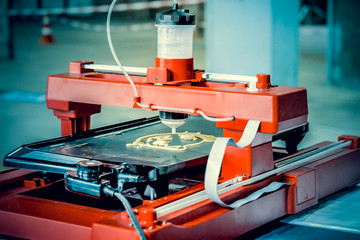Imagine personalized and nutrient-rich 3D printed snacks tailored to your dietary needs.
This discussion delves into the culinary potential of 3D printing, from designing edible masterpieces to addressing challenges like taste and acceptability.
Get ready to embark on a journey where pixels meet palate in the realm of 3D printed food.
The Revolutionary Technology of 3D Printed Food
3D printing is revolutionizing the food industry by allowing for the creation of personalized and customized snacks. This innovative technology, known as 3D food printing, enables the production of edible food items using additive manufacturing techniques. With 3D printing, it is now possible to print intricate and complex designs with precision and accuracy.
Food printing involves the use of specialized 3D printers that extrude layers of edible materials to build up a final product. These printers utilize different types of d food printing technology such as selective laser sintering or fused deposition modeling. By combining various ingredients and textures, it becomes possible to create unique and customized snacks tailored to individual preferences.
The benefits of 3D printed food are vast.
- It allows for greater control over nutritional content, making it easier to meet specific dietary requirements.
- Additionally, the ability to personalize shape, size, and texture opens up new possibilities for creating visually appealing and enjoyable eating experiences.
- Moreover, printing food offers opportunities for innovation in culinary creations. Chefs can experiment with different flavors, colors, and ingredient combinations that were previously unattainable.
- This technology also has potential applications in addressing issues like food waste by utilizing alternative ingredients or transforming leftovers into new dishes.
Exploring the Culinary Potential of 3D Printing
Using advanced technology, engineers and chefs are discovering the endless possibilities of 3D printing in culinary creations. This revolutionary technique allows for the creation of intricate and customized food items that were once unimaginable.
The culinary potential of 3D printing is being explored in various ways:
3D printing food
With 3D printers, edible food can be printed layer by layer using different materials, resulting in unique shapes and textures.
3D printed edible food
Chefs can now create edible masterpieces by utilizing 3D printers to construct intricate designs and structures from edible ingredients.
3D printing edible food
The ability to print edible food opens up a whole new world of creativity in the culinary field, allowing for innovative dishes that push the boundaries of traditional cooking techniques.
Food from 3D printer
By harnessing the power of 3D printing technology, chefs can create visually stunning and delicious meals that not only satisfy taste buds but also captivate the eyes.
With each passing day, more exciting advancements are made in exploring the culinary potential of 3D printing. From personalized nutrition to tailored shapes and dimensions, this technology has the potential to revolutionize the way we think about food preparation and consumption.
As engineers continue to refine their techniques and chefs experiment with new flavors and combinations, we can expect even more remarkable creations to emerge from these futuristic printers. So get ready to indulge your senses as the world of 3D-printed food continues to evolve before your very eyes!
From Design to Delight: Creating Edible Masterpieces With 3D Printing
With 3D printing technology, you can create intricate and visually stunning edible masterpieces that will delight both your eyes and taste buds. The possibilities of 3D printing food are endless, as it allows for the creation of unique shapes, textures, and flavors.
But how exactly can you 3D print food?
To answer this question, let’s delve into the process.
- First, a digital model of the desired food item is created using specialized software. This model is then sent to the 3D printer, which uses a variety of techniques such as extrusion or selective laser sintering to create the physical object layer by layer.
- The choice of ingredients plays a crucial role in achieving both aesthetic appeal and palatability. From chocolate to sugar paste to mashed potatoes, various materials can be used for 3D printing food. These ingredients are carefully formulated and prepared to ensure optimal texture and taste.
One of the key advantages of 3D printed food is its ability to cater to specific dietary requirements. For example, personalized nutrition can be achieved by incorporating specific nutrients or avoiding allergens in the printed food. This opens up new possibilities for individuals with dietary restrictions or special nutritional needs.
3D printing technology has emerged as a revolutionary tool in the food industry. It offers the ability to create food products with customized shapes, structures, and taste, addressing issues like inadequate fruit and vegetable intake among children.
With a specially designed formula for children’s nutritional requirements, 3D-printed snacks can provide essential nutrients such as energy, calcium, iron, and vitamin D. This technology has also been explored in various fields like pharmaceutical manufacturing and tissue engineering.
Although challenges remain regarding taste and acceptability, the potential for personalized and customized snacks is promising.



